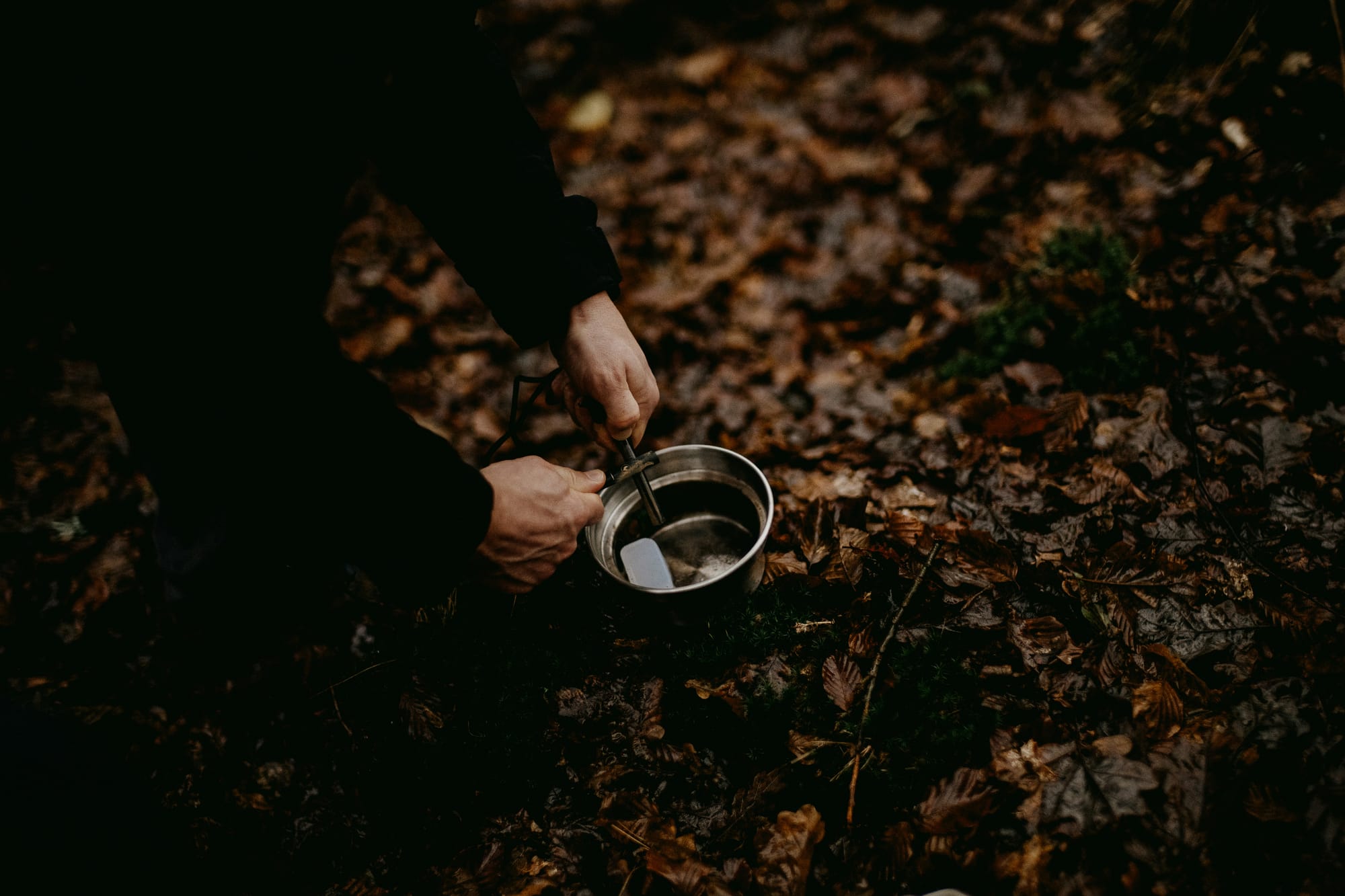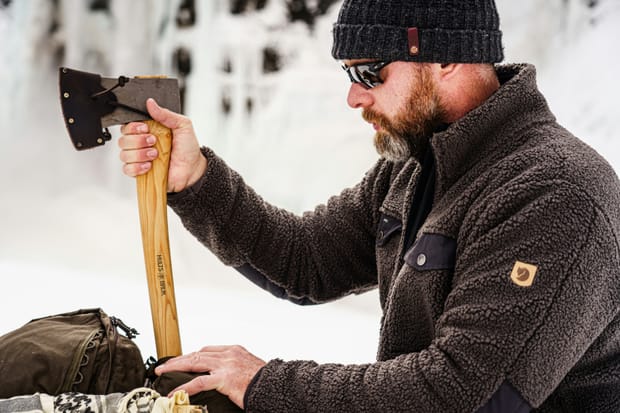Bushcraft rewards simplicity. The woods have a way of stripping down your ideas about what you think you need and leaving you with what truly works. After enough wet mornings, broken branches, and fires coaxed into life in poor conditions, most people end up carrying a small set of tools that do real work. These five pieces form the backbone of a kit that stays useful across seasons and landscapes.

1. A Good Knife
A knife is the most personal tool in bushcraft. It handles fine work and rough work without complaint. With it, you cut branches down to size, shave curls of dry wood from the inside of a damp log, slice cordage, carve tent pegs, and clean up bark for kindling. On cold days it opens food packets when fingers don’t move the way you want them to.
A reliable bushcraft knife shows its worth in small moments. When the rain has soaked everything, you can split a branch and expose the dry core. When the fire is struggling, you can carve feather sticks until the flame catches. When you need to improvise something in camp, the knife is the first tool you reach for. You feel it settle into your routine over time. It’s the piece that never leaves your side.

2. A Water Container
Water is weight, but it is also safety. A sturdy container gives you the ability to collect, carry, store, and boil water when needed. Metal is a good choice because it withstands heat and lets you purify water over a flame without relying on filters or chemicals. Even a simple bottle becomes essential on longer walks, where streams run low or seasonal springs dry up.
Picture a mid-summer afternoon. The heat rises through the trees, and your pace slows. A nearby creek gives you a source, but not a guarantee. With a metal bottle or cup, you can boil the water at camp and drink confidently later. It’s a quiet kind of security, the sort that only becomes obvious when you need it.

3. A Small Axe
A small axe is the answer when the wood is too thick for a saw, too tough for a knife, or too stubborn from the weather. It doesn’t need to be large. A compact axe splits kindling, opens wet rounds, trims branches, and clears narrow paths. You will use it most in the hour before sunset, when the firewood pile looks smaller than you’d like and the air cools quickly.
There’s a rhythm to working with a small axe. You split a log, then split it again. You stack the dry pieces within reach of the firepit. You listen to the sound of the blade working into the grain. Even simple tasks feel grounded. A small axe gives you control over the conditions. Damp wood becomes dry kindling. Heavy pieces become usable. When the weather turns against you, it’s the tool that brings the balance back.

4. A Reliable Way to Carry Fire
Fire-starting gear is the quiet insurance policy that keeps a trip comfortable. A lighter, a ferro rod, a match case — it doesn’t matter as long as it works when the woods are wet and your hands are tired. The trick is to keep it in the same place every time. Consistency matters outdoors.
Think of a late autumn afternoon. The temperature drops fast and the wind picks up. You gather dry grass and thin branches, but they won’t catch on their own. A single spark on a feather stick makes the difference between a warm evening and a long, cold one. Having your fire kit ready and dry is something you only need to forget once. After that, it becomes habit. The kit always stays exactly where you expect it.

5. A Field Bag or a Backpack
Carrying gear well is as important as the gear itself. A good field bag or backpack keeps everything organized and protected from weather and dirt. Waxed canvas and oilskin handle rain and rough use, while a structured bag helps you work efficiently without stopping to rearrange your tools.
Imagine a simple outing. You’re walking along the edge of a pine stand, gathering tinder and checking for dead standing wood. Your folding saw rests in the side pocket. Gloves sit inside the main compartment. Fire-starting tools are tucked into an inner pocket. A knife on the shoulder strap or belt rounds out the setup. Every item has a place, which means you spend more time looking at the woods and less time digging through a pack.
A good bag keeps the rhythm of the day steady. It becomes the anchor of your kit, carrying the essentials for long walks, quick camp setups, and everything in between.
Why These Five Matter
Taken together, these tools cover the essentials of bushcraft: cutting, gathering, shaping, burning, and carrying. They aren’t flashy and they aren’t complicated. They are the pieces that stay useful in every season. Their importance reveals itself gradually, trip after trip, until you stop thinking about them at all. They simply become part of the way you move through the woods.







